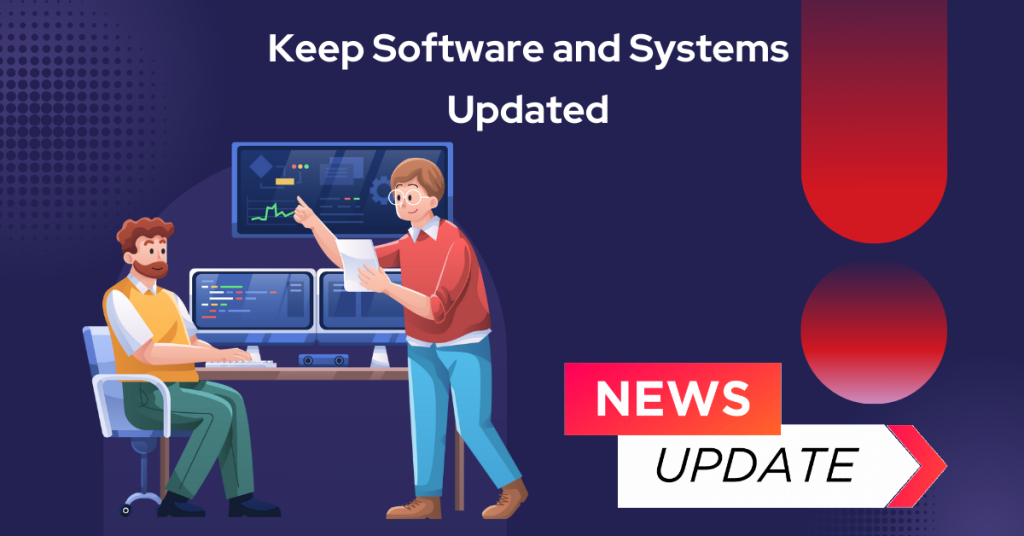
Business cybersecurity is a critical issue that affects companies of all sizes and industries. A proactive approach to cybersecurity is essential for protecting sensitive data and maintaining the trust of customers and other stakeholders. With so many threats out there, it’s crucial to have a proactive approach to protecting your company.
In this article, we will discuss proactive cybersecurity strategies. We’ll cover topics such as developing a security mindset, implementing security measures, and staying up-to-date on the latest cybersecurity threats. By following these tips, you can help keep your business safe from cyberattacks.
Types of Cyber Threats Your Business Faces:
Every business, regardless of size or industry, is vulnerable to cyber threats that can range from individual hackers who target specific companies to state-sponsored groups that deploy malicious software. It’s important to understand the types of cyber threats your business faces and take steps to protect confidential information and safeguard customer data. The most common threat includes phishing scams, malware attacks, and ransomware attacks.
- Phishing scams are when an attacker sends emails attempting to gain access to sensitive information while malware attacks deliberately install malicious software on a computer in order to collect confidential information or distribute malware throughout a network.
- Ransomware attacks attempt to steal a company’s data and then demand ransom payments be paid in order for the company get its data back.
- It’s important to note that some cyber threats are more targeted, such as advanced persistent threat (APT) attacks, which specifically target business networks and systems to gain access to confidential information.
Importance of Cybersecurity Strategies for Business:
Businesses today face an ever-increasing threat from cyber attacks. To protect themselves, companies need to adopt a proactive approach to cybersecurity. This means taking steps to prevent attacks before they happen, rather than waiting for them to occur and then trying to respond. To do this, businesses need to develop comprehensive cybersecurity strategies that include layers of security measures and policies.
Develop a Security Mindset:
Developing a security mindset is essential for any business looking to stay ahead of cyber threats. It is essential for the entire organization to recognize and comprehend the risks associated with cyber threats, as well as their responsibility in safeguarding the company’s data. This means having a general understanding of the threats facing your business and a commitment to implementing security measures.
Train Employees:
Employees are often the weakest link in a company’s cybersecurity defense. To mitigate this, it is important to train employees on the importance of cybersecurity and how to identify and respond to potential threats. This includes educating them on best practices for password management, how to spot phishing attempts, and how to report suspected security incidents.
Keep Software and Systems Updated:
Software and systems are constantly being updated to address new vulnerabilities. To ensure that a business remains protected, it is essential to keep software and systems updated and patched. This includes ensuring that all software and systems are running the latest version. Businesses should also consider implementing automated patch management solutions to ensure that patches are installed in a timely manner.

In order to stay ahead of potential cyber threats, it’s important to keep up with the latest security trends and best practices. This includes participating in webinars and attending industry events, as well as reading blogs and industry reports.
Perform Regular Risk Assessments:
One of the most important strategies for creating a proactive approach to cybersecurity is to regularly assess the risks that your business faces. This includes identifying potential vulnerabilities in your systems and networks, as well as evaluating the likelihood of a cyber attack. By regularly performing risk assessments, you can stay ahead of potential threats and take steps to mitigate them before they cause damage.
Implement Security Best Practices:
Another key strategy for creating a proactive approach to cybersecurity is to implement security best practices throughout your organization. This includes things like using strong passwords, implementing two-factor authentication, and regularly updating software and systems. It’s important to educate employees on how to identify phishing attempts and other cyber threats, and what to do if they suspect that their computer has been compromised.
Invest in Security Solutions:
In order to create a proactive approach to cybersecurity, you will need to invest in security solutions that can help you protect your business. This can include things like firewalls, intrusion detection and prevention systems, and endpoint protection software. It may be beneficial to invest in security solutions that provide real-time threat intelligence and analytics, so you can quickly detect and respond to potential cyber threats.
Develop an Incident Response Plan:
A proactive approach to cybersecurity also requires a well-defined incident response plan. This plan should detail the steps that will be taken in the event of a cyber attack, including how to contain the attack, how to recover from the attack, and how to prevent similar attacks in the future. It’s important to regularly test and update your incident response plan to ensure that it remains effective.
Partner with a Managed Security Service Provider (MSSP):
Partnering with an MSSP can provide you with a proactive approach to cybersecurity. MSSPs offer a range of services, including incident response, threat intelligence, and compliance management, which can help you identify, respond to, and prevent cyber threats. MSSPs can provide you with access to experts who can help you stay up-to-date on the latest security best practices.
Monitor for Suspicious Activity:
Monitoring for suspicious activity is a key component of a proactive cybersecurity strategy. This includes monitoring for unusual network traffic, suspicious login attempts, and other signs of a potential security incident. By monitoring for suspicious activity, you can quickly detect and respond to potential threats before they cause damage.
Create an Incident Response Plan:
Having an incident response plan in place is crucial for dealing with a cyber incident. This includes clear communication protocols, roles and responsibilities, and procedures for dealing with the incident. It also includes steps for communication with external parties such as law enforcement and clients. Creating and regularly testing an incident response plan can help you quickly respond to a cyber attack, minimizing the damage and impact on your organization.
Final Verdict
Cybersecurity is an ever-evolving field, and creating a proactive approach requires ongoing effort. This includes assessing the risks your business faces, implementing security best practices, investing in business cybersecurity solutions, monitoring for suspicious activity, and creating an incident response plan. Partnering with a managed security service provider can also help you stay on top of the latest threats and trends. By taking these steps, you can ensure that your business is better prepared for any potential cyber-attacks.




